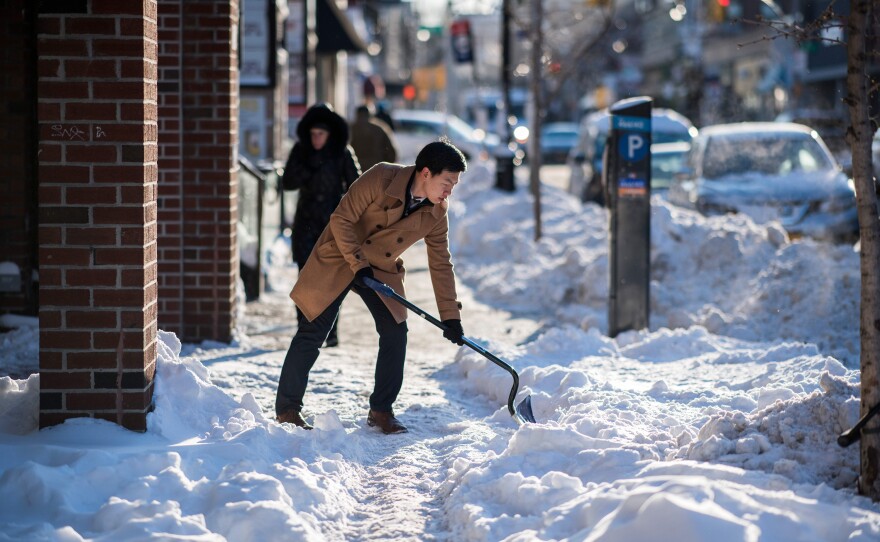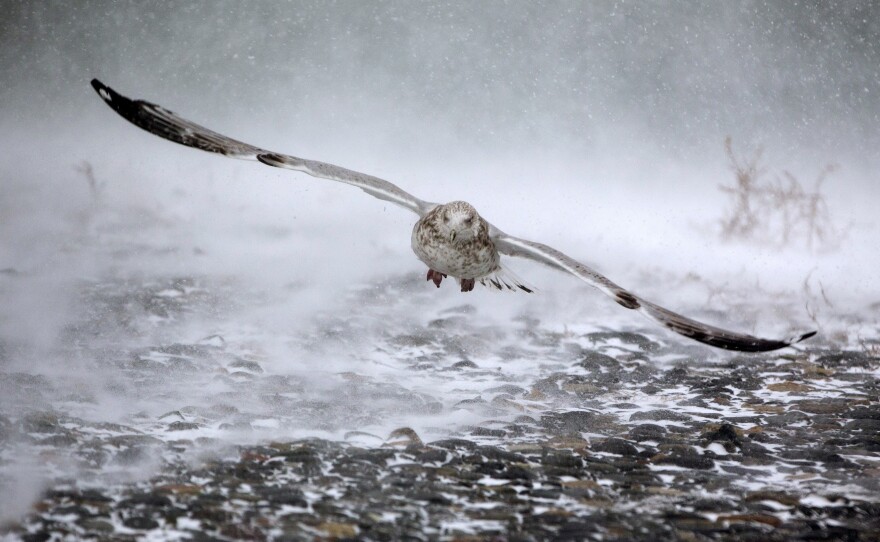As a large, powerful winter storm passes north into Nova Scotia, cold weather is sticking around in the Northeast.
"An arctic outbreak will keep temperatures 20 to 30 degrees below average across the northeastern U.S.," the National Weather Service says.
The "bomb cyclone" that raked up the East Coast in the middle of this week left behind snow, ice and damaging coastal flooding. National Guard units were mobilized in multiple states, and officials urged people to stay off the roads if they could, as many regions experienced high winds and near zero visibility.
But the end of the storm doesn't mean the end of the danger.
"While conditions have begun to improve across the northeastern U.S., the arctic surge is already underway accompanied by brisk winds at times," the NWS weather forecast says. "Dangerously low wind chill temperatures are to be expected the next couple of days with some blowing snow possible. "
Many regions in New England, the Midwest and the southern U.S. might be breaking daily temperature records in this cold snap.
Counting wind chill, parts of New England could feel as cold as minus 30 degrees, The Associated Press reports:
" 'This is chilly, chilly stuff,' said Brian Hurley, a meteorologist with the National Weather Service's Weather Prediction Center in College Park, Md.
"The arctic blast could make temperatures feel as low as minus 15 degrees to minus 25 from Philadelphia to Boston and make residents of states like Maryland and Virginia shiver from temperatures ranging from 10 degrees to 15 degrees."
The recent stretch of cold has been implicated in more than a dozen deaths. The snow from the winter storm also contributed to multiple car accidents, and at least one man was struck and killed by a snow plow, The Associated Press reports.
Copyright 2021 NPR. To see more, visit https://www.npr.org.














